Integrated pest management (IPM) is a sustainable approach to managing pests by combining biological, cultural, physical and chemical tools in a way that minimizes economic, health and environmental risks. One hundred and seventy-eight horticultural producers were surveyed in 2009-10 to determine the IPM practices used by growers in the southeastern U.S. Growers were asked a series of questions about monitoring or scouting for pests, prevention practices or interventions used to control pests. For each of the 230 questions asked, growers could answer whether they used the practice “Always,” “Often,” “Rarely” or “Never.”
Below are 10 notable practices that have a high potential impact on southeastern ornamental plant production and the combined percentage of growers that use them “Always” or “Often.” Based on survey results and statistical analysis, we determined that three IPM behavior groups exist: “IPM savvy,” “IPM part-timer” and “IPM reluctant.” It is important to remember that this publication only mentions a small number of IPM practices out of a vast array of IPM strategies. For more IMP ideas and solutions, visit the Southern Region IPM Center website at southernipm.org.
| The southern nursery integrated pest management (SNIPM) working group received a grant in 2009 from the Southern Region IPM Center (southernipm.org) to create a pest management strategic plan (PMSP) and a crop profile (CP). Specialists from Kentucky, Tennessee, North and South Carolina, and Georgia based the PMSP and CP content on information shared by nursery growers and pest managers during a two-day meeting at the Mountain Horticultural Crops Research and Extension Center in Mills River, N.C. in 2009. The documents are comprehensive and specific to nursery crops in the Southeast and synthesize the latest information about insect, disease, weed and cultural practices used in IPM on nursery crops. Both documents are available for download at no charge at https://ipmdata.ipmcenters.org/source_report.cfm?view=yes&sourceid=664. |
1. Growers who send plant, insect and disease samples to a plant diagnostic clinic.
Growers who sent in more samples to a plant insect and disease clinic were more likely to have adopted other IPM practices compared to growers who sent in fewer samples. The number of samples sent yearly ranged from 0 to 30. Correct identification of pests begins the cascade of intervention possibilities, allowing growers to choose the best management option to effectively save labor and other costs, resulting in less harm to the environment and decreasing the threat of pest damage as quickly as possible.
In difficult financial times, like those in the late 2000s and early 2010s, labor is reduced at ornamental production nurseries to maintain profitability. Reduced labor usually coincides with less scouting and fewer pest control activities. However, waiting until the last minute to intervene may allow pests to populate more plants, spread to surrounding landscapes and actually end up costing more to control when a sale occurs. Scouting and monitoring help growers determine which pests are attacking which plants and at what time of year. This information overlaid across a nursery will help growers develop precise and specific control measures, rather than relying on broadband spray applications to the entire crop or a large part of the nursery.
2. Growers who use IPM practices at their nursery “Always,” “Often” and “Rarely.”
When growers were asked how frequently they used IPM practices at their nursery, 16% said “Always,” 64% said “Often” and 20% said “Rarely.”
IPM is a sustainable approach to managing pests by combining biological, cultural and chemical tools in a way that minimizes economic, health and environmental risks. It requires dedication to scouting, monitoring, identifying pests, choosing the best options available for control and evaluating whether or not the option was effective. Effective IPM is also a movable target that requires growers to continually educate themselves about new tools, chemicals options and pest control methods that fit their nursery. Like any knowledge base, IPM requires practice and dedication but is attainable by any grower.
3. Growers who keep records of pest scouting activities.
In the survey, 24% of growers took pictures of symptoms or of pests found, and 33% kept permanent records of their scouting activities. With the advent of the Internet, finding great pictures of insects and their life cycles is a few clicks away (e.g., www.bugwood.org) and some sites even aid with identification using question prompts.
Keeping pictures of insects attacking inventory can be a powerful teaching tool for future employees. Permanent records of scouting and monitoring will allow scouts to begin building patterns of pest behavior at the nursery that could be used to prevent or reduce pest populations in the future. Other ideas include matching the patterns of pest behavior with the phenology of the host plant or surrounding landscape plants. This method (phenology) matches bud swell, flowering or leaf emergence with pest's life cycle stage and can trigger scouting for a particular pest the following year(s). According to the survey, 40% of growers use this method.
 Figure 1. Screenshot of growing degree days (GDD) accumulated at the Mountain Research and Education Center in Blairsville, Ga. Many weather-based websites such as the Georgia Automated Environmental Monitoring Network (www.georgiaweather.net/) will calculate GDD for a user-defined period or from January 1 of the current year.
Figure 1. Screenshot of growing degree days (GDD) accumulated at the Mountain Research and Education Center in Blairsville, Ga. Many weather-based websites such as the Georgia Automated Environmental Monitoring Network (www.georgiaweather.net/) will calculate GDD for a user-defined period or from January 1 of the current year.Growers can also use growing degree days (GDD) to determine when to begin scouting for a specific pest and how that pest life stage is progressing based on the weather. In zone 8b and southward, this method is not as effective compared to zone 8a northward due to GDD models relying on a daily base (minimum) temperature that often is not reached in zone 8b and southward, particularly in late spring-summer. GDD can be calculated using any number of weather stations throughout the Southeast and many websites such as the Georgia Automated Environmental Monitoring Network (www.georgiaweather.net/) will help calculate it (Figure 1). There is even a smartphone application for GDD (iNet Solutions Group, Inc.). One caveat to using weather stations is that small differences in the location of weather stations and the nursery can cause variation in GDDs. Ideally, nurseries would have their own on-site weather stations with programs to help calculate GDD. The collected information can be used to determine when a threshold number of pests present reach a stage at which they might harm the host plant or decrease its value and when it is time to intervene using the least toxic alternative. Approximately 21% of growers in the Southeast use GDD.
4. Growers who name an insect versus a disease.
 Figure 2. Aphid wasp (Lysiphlebus testaceipes) adult emerging from aphid mummy. Photo: Peter J. Bryant (pjbryant@uci.edu), School of Biological Sciences, University of California, Irvine.
Figure 2. Aphid wasp (Lysiphlebus testaceipes) adult emerging from aphid mummy. Photo: Peter J. Bryant (pjbryant@uci.edu), School of Biological Sciences, University of California, Irvine.The cornerstone to building a strong IPM program is scouting and monitoring. The next course of action in the IPM sequence is identifying what was found. Correct insect or disease identification allows growers to determine if the pest is in the part of its lifecycle that harms plants, or, in the case of diseases, whether or not it is the primary pathogen or a secondary organism that is present but not causing the symptoms noted on the plant. In the survey, 87% of growers said they name the insect that is causing the damage, while 84% name the disease.
Correct pest identification is a vital piece of information when deciding how and when to intervene to control pests. Another step is to identify any predatory or beneficial insects or natural enemies present on the plants or on adjacent plants. This is often difficult because growers are focused more on the pest that causes damage; however, 30% of growers said they determine if natural enemies are present.
Help with natural enemy identification can be found at biocontrol.entomology.cornell.edu/ which shows many different types of beneficial insects and their method of bio-control. For example, one of the most prevalent insects in ornamental production is aphids. A predator of aphids, the aphid wasp, is shown in Figure 2.
5. Growers who follow a standardized sampling plan when scouting.
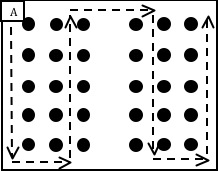
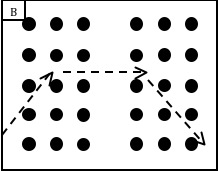
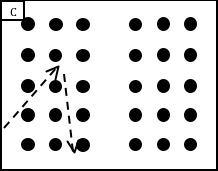 Figure 3. The (A) rigid block, (B) random walk and (C) hotspot scouting diagrams used in integrated pest management programs.
Figure 3. The (A) rigid block, (B) random walk and (C) hotspot scouting diagrams used in integrated pest management programs.Scouting is the act of visually inspecting large groups of plants to identify potential pest problems. In the survey, only 41% of growers said they follow a standardized sampling plan when scouting. The method of scouting most frequently used was looking over large groups of plants that have damage and then inspecting individual plants to determine the causal agent. This was not done on a set schedule or during a specific time set aside for scouting. Often, no set driving/walking pattern was followed; rather, scouting was accomplished while doing other tasks like potting, fertilizing or shipping.
When scouting for insects, a specific time should be set aside for a knowledgeable employee to scout independently of other tasks. There are three simple directional plans to use when scouting: rigid block, random walk and hotspot (Figure 3). The rigid block method allows growers to inspect almost every plant in the block during each scouting event. The random walk bisects planting areas and allows for a cursory scout of roughly half the block and a fine inspection of the other half. The hotspot scouting method is reserved for those areas a grower knows are going to be trouble spots because some species of plants may be more susceptible to a particular pest problem.
6. Growers who group plants in similar irrigation zones.
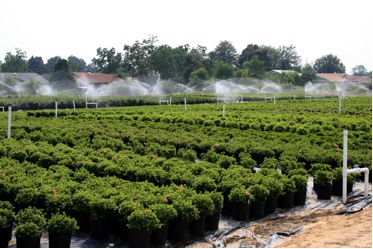 Figure 4. This photo shows two blocks of 3-gallon azaleas (Rhododendron spp.) grouped by planting date and plant size. The plants being irrigated in the background were planted in 3-gallon containers 12 months before this photo was taken and are two to three times the size of the plants in the bed closest to the camera (not being irrigated) that were planted four months prior to this photo being taken. Grouping plants based on water needs can reduce root pathogens in nursery production.
Figure 4. This photo shows two blocks of 3-gallon azaleas (Rhododendron spp.) grouped by planting date and plant size. The plants being irrigated in the background were planted in 3-gallon containers 12 months before this photo was taken and are two to three times the size of the plants in the bed closest to the camera (not being irrigated) that were planted four months prior to this photo being taken. Grouping plants based on water needs can reduce root pathogens in nursery production.Grouping plants in similar irrigation zones was a method used by 91% of growers. Historically, growers have grouped similar plants within the same irrigation zone, but sales schedules and potting dates never seemed to match. Recently, due to decreased sales, growers have had the space and time to group plants together by water requirements and container size. This is seen in Figure 4 where a grower has filled an entire block of nursery space, independently irrigated from other blocks, with 3-gallon azaleas (Rhododendron spp.) that were potted at the same time.
When organizing new production areas, growers should think about grouping plants together by water-use characteristics. These water-use characteristics can be based on plant age, species or container size.
7. Growers who create or use a weed map.
A weed map identifies problem weeds in conspicuous places throughout the nursery and generational or seasonal weed spread throughout a nursery. With this data, growers can trace backward or forward to see how these weed hotspots affect weed populations throughout the nursery; however, only 8% of growers responding to the survey create or use a weed map.
For example, if there are many weeds along a road or wooded area slightly up-wind or uphill from the potting area, this could be the source for weed seeds in containers in the nursery. Having such information allows a grower to target control measures, reduce herbicide use and potentially reduce nursery-wide weed spread. Eradicating those weeds would prohibit their access to production.
8. Growers who inspect or quarantine incoming stock.
Quarantining or isolating incoming stock reduces the risk of spreading disease or insects to plants present on the nursery site. Although 90% of survey respondents inspect plants for pests when they are delivered, only 26% of growers quarantine/isolate incoming stock. Most growers do not quarantine new plants in a specific area because they may have selected the plants themselves from another grower, know the grower who sold them the plants or continue to observe the plants after they are introduced into production.
An isolation period of two to four weeks is ideal, as this is the typical efficacy range of many insecticides and fungicides. Despite these recommendations, given present production cycles in the nursery industry and the necessity to optimize all growing spaces, quarantining is rarely practiced. Nevertheless, isolation is especially important if plants are delivered from a USDA-regulated or suspicious geographic area. As a precaution, all growers should, at a minimum, inspect plants when they first arrive to make sure no visual disease symptoms or insects or weeds are present.
9. Growers who use bioprotectants.
Bioprotectants are naturally occurring organisms or compounds that aid plants in pathogen defense. They can be applied as granules, soil drenches or sprays and have various modes of action. Some of the newer and more frequently used bioprotectants include RegaliaSC™ (formally Milsana™, a plant extract of Reynoutria sachalinensis, giant knotweed), a formulated fungicide that stimulates the plant's natural defense mechanisms and enhances the resistance to fungal and bacterial diseases. Currently, it controls powdery mildew and rust on ornamentals such as Lagerstroemia and Rosa, but most work has been conducted on annuals. According to the Interregional Research Project No. 4 website (IR-4, www.ir4project.org), it is being tested for efficacy against Phytophthora on ornamentals. Cease™ (a strain of Bacillus subtilis) is a broad spectrum, preventative biofungicide recommended for the control or suppression of many important plant diseases such as leaf spots (Alternaria spp., Cercospora spp., Entomosporium spp., Helminthsporium spp., Myrothecium spp., Septoria spp.), Phytophthora spp. and Anthracnose (Colletotrichum spp.). Actino Iron (Streptomyces lydicus) is a biological fungicide that aids in the suppression of Pythium, Rhizoctonia, Fusarium, Phytophthora and Verticillium on ornamentals. Actino Iron colonizes the root systems of ornamentals and excludes pathogens and produces enzymes that destroy pathogens.
Only 12% of growers use bioprotectants. However, bioprotectants should be thought of as another tool in an IPM program to prevent the presence and spread of pathogens in the nursery. If they are too costly to use in the entire nursery, growers could consider a trial on plants most susceptible to soil pathogens (for example, Rhododendron, Viburnum, Pieris or Camellia).
10. Growers who use sticky cards, ethanol traps or lures.
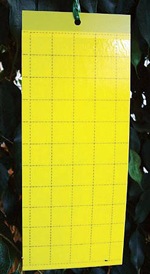 Figure 5. Sticky traps are one method of monitoring insect populations and can help a grower better understand when and what to spray for insects based on the insect species present.
Figure 5. Sticky traps are one method of monitoring insect populations and can help a grower better understand when and what to spray for insects based on the insect species present.Sticky cards, ethanol traps or lures are used by 18% of growers. Any combination of these monitoring techniques is very useful to determine when insects (typically adults) have emerged in the production area. Traps (Figure 5) and lures are an inexpensive, quick and effective way to determine the exact time a particular insect emerges and how heavy the population is in the nursery.
Traps can be used easily by a relatively untrained employee to greatly increase a grower's knowledge base about exactly when to spray. Growers in the University of Kentucky IPM scouting program often cite the site-specific emergence knowledge gained by using traps and their enhanced ability to know when to spray as one of the greatest benefits of the program.
Effective strategies include mating disruption for some pests using pheromone lures that act as male attractants. When males arrive to mate there are no females present. This decreases egg laying and subsequent pest populations. Other pests simply need to be monitored for when to begin spraying (for example, the granulate ambrosia beetle that is attracted to ethanol traps). When pests have been correctly identified in the spring, it is time to begin a spray program. Many of these tools can be found at www.greatlakesipm.com, greenmethods.com or biocontrol.entomology.cornell.edu/.
Authors
1Matthew Chappell, Virginia Tech (formerly University of Georgia)
2Jean Williams-Woodward, University of Georgia
3Anthony V. LeBude, North Carolina State University
4Amy Fulcher, University of Tennessee
5Sarah White, Clemson University
6Steve Frank, North Carolina State University
7Joe Neal, North Carolina State University
Status and Revision History
Published on Sep 30, 2011
Published with Full Review on Sep 25, 2014
Published with Full Review on Feb 28, 2024


























































